Lhasa – the ancient capital of Tibet
It was late in the afternoon when we left Xining behind, embarking on a 20 hours train ride to Lhasa, through the spectacular and wild landscapes of the Tibetan plateau. During old times, traveling to the “Roof of the World” was always a long journey, but after communist China took over these lands a massive project started being implemented across the vast plateau, including the construction of a highway that stretches all the way through the Himalayan Mountains till the border with Nepal.
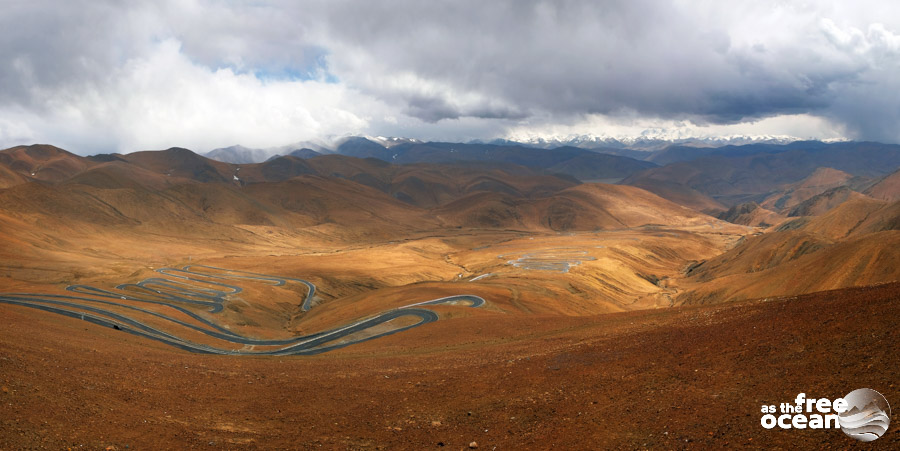
The most convenient option among foreign visitors that travel from mainland China to Lhasa is the train, which reserves also more chances to admire the beautiful landscape offered by the tall white peaks of the mountains.
Tibet Travel Permit
An important detail to mention about visiting Tibet is that foreign visitors are not allowed into the plateau if they are not part of a tour. Special permits have to be organized at least 20 days in advance by the mountaineering association in Tibet and a guide must accompany visitors in every day of their stay. For the ones that plan to visit only Lhasa, they can explore the streets of the city outside the tour’s schedule, as long as they don’t leave Lhasa.
We contacted a Tibetan agency right after our arrival in Hong Kong when we were told that our stay in China would be limited to 30 days. Being on the roof of the world was a dream that came true (and I guess that whoever watched the movie “Seven Years in Tibet” felt a desire to experience one day being in this place themselves). Miriam’s enthusiasm was as big as mine when we started planning our trip to Lhasa. Once we got the confirmation from the agency, we booked our train tickets (which sell out fast, so book in advance!) and planned the rest of our trip through China.
The train across the Himalayan Mountains
Three weeks later we boarded a very crowded overnight train from Xining, where we spent two days in order to acclimatize easier to the high altitudes once we would arrive in the Himalayas. We found only standard hard seats on the train because all sleepers were already booked, so we joined other passengers in a carriage more crowded with luggage than with people. It felt like one of the longest rides we ever experienced due to the lack of comfort, but we had many chances to forget about it whenever the view out of the window was able to catch our attention.
We crossed a gigantic sea of sand in which a few little traditional Tibetan houses were the only proof that once humanity took over these mountains. Thousands of yaks (large domesticated wild oxen with shaggy hair) were also part of the landscape. We found out later how much these animals are integrated into the Tibetan tradition and lifestyle.
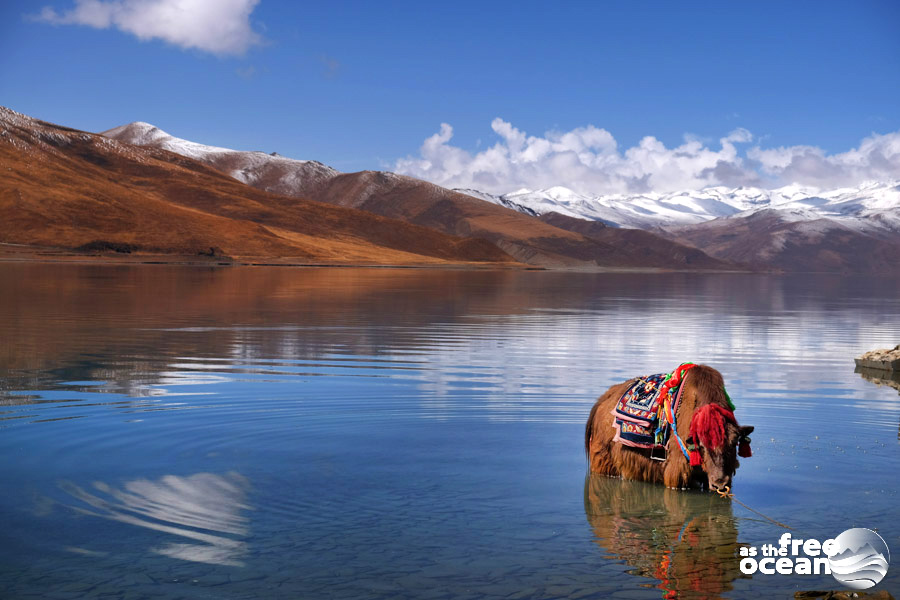
The sunrise in the morning prior to our arrival was extremely beautiful when the light reflection in one of the lakes brought the shapes of the mountains to life and revealed spots of color in this apparently infinite valley. Each hour that brought us closer to Lhasa lifted up our excitement and the impression when we arrived met all our expectations about how the city would feel like.
We received a copy of our permits for Tibet via email from the agency that we booked the tour with. It is important to keep a copy of it as the ticket for the train to Lhasa cannot be obtained without. The same rule applies at the arrival, where Chinese authorities will collect passports in order to verify that all visitors are in the possession of a valid permit.
Lhasa – the ancient city
Outside the station our guide welcomed us in the typical Tibetan way, offering us traditional ceremonial scarfs, called khatas. Tibetan khatas are usually white and made out of silk. The white color symbolizes purity and compassion of the giver, but yellow-golden scarves are also used. The guide drove us to our accommodation, a beautiful hotel in the old town of Lhasa.
After the Chinese invaded the Tibetan territories in 1949 and later officially integrated them as part of the newly declared People’s Republic of China, Tibet went through major changes starting from the years when the Chinese Cultural Revolution took place till recent times. Modern buildings brought contrast in the architecture of the ancient plateau and foreign brands found their way into the local stores.
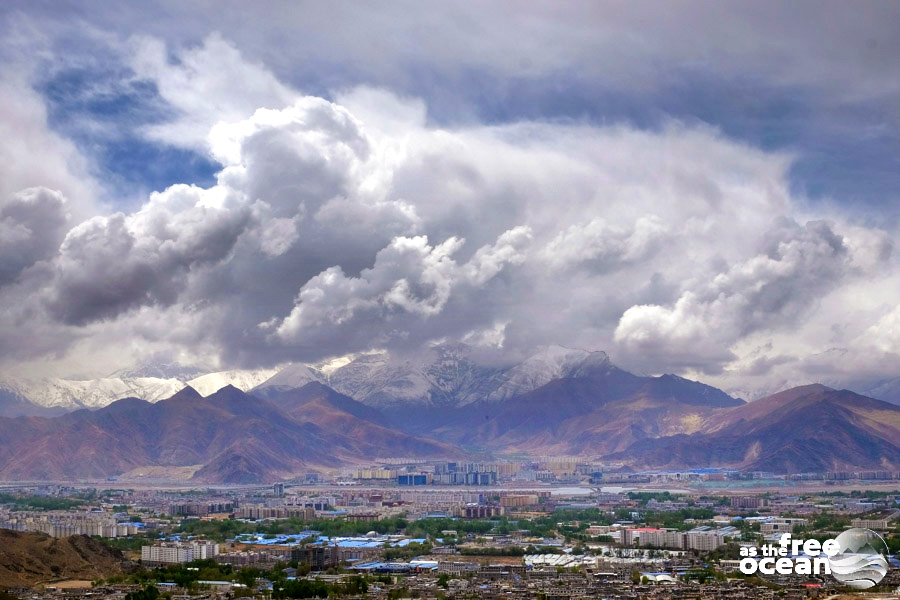
The western part of Lhasa is inhabited mostly by Chinese Han people and it is more modern and busy. The old town of Lhasa instead is still profoundly traditional and its architecture continues to reflect the authenticity of the Tibetan lifestyle and the impact of the Buddhist religion on the history and social development of these lands.
The location of our hotel allowed us to lose ourselves on the narrow streets of this ancient labyrinth of tiny houses and temples. While the day of our arrival felt still challenging from the perspective of our efforts to adapt to the new altitude, soon after we were able to explore the neighborhood and understand the particularities of life in the capital of Tibet.
Religion and tradition
From all factors, religion had probably the strongest impact on the way people lived their lives over the centuries. After the Chinese occupation of Tibet and the destruction of more than 6000 monasteries, the religion has been constantly under threat for many years. But nowadays, despite the tumultuous events of the past decades, Buddhism and Tibetan tradition continue to be strong and evident. Tibetans are still proudly wearing their traditional clothes while walking on the crowded streets or while engaging in koras (a type of pilgrimage consisting of a clockwise circumambulation of sacred sites or objects).
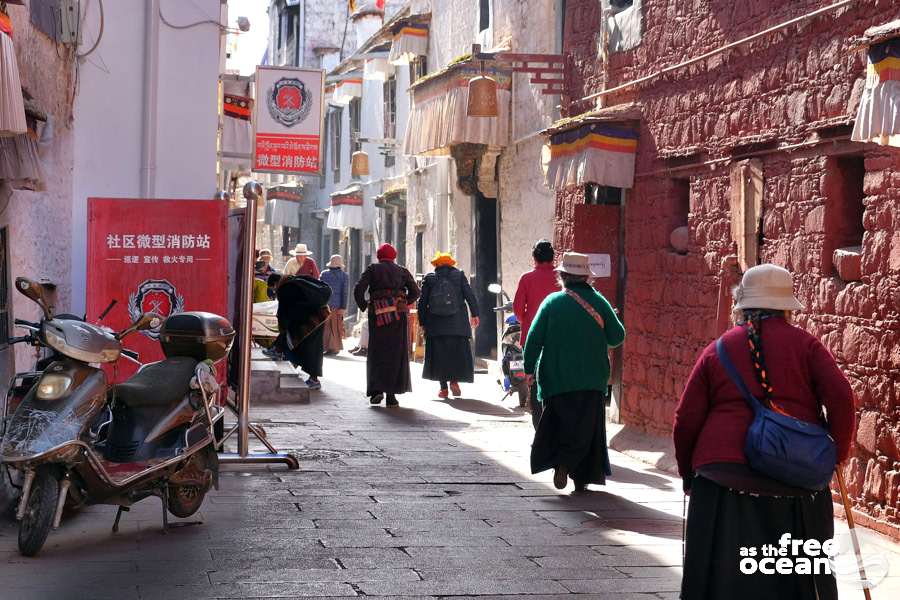
The streets were filled with fruits and vegetables stands, butcheries serving yak meat and restaurants inviting passers-by to try the local food and a cup of delicious butter tea.
It all felt like suddenly traveling back in time and life seemed peaceful and beautiful. But the appearance is not reflecting the whole truth about the situation in Tibet. The constant presence of Chinese soldiers shows that tensions still exist. Though, politics remains a taboo subject and tourists are advised to temper their curiosity when engaging in sensitive conversations.
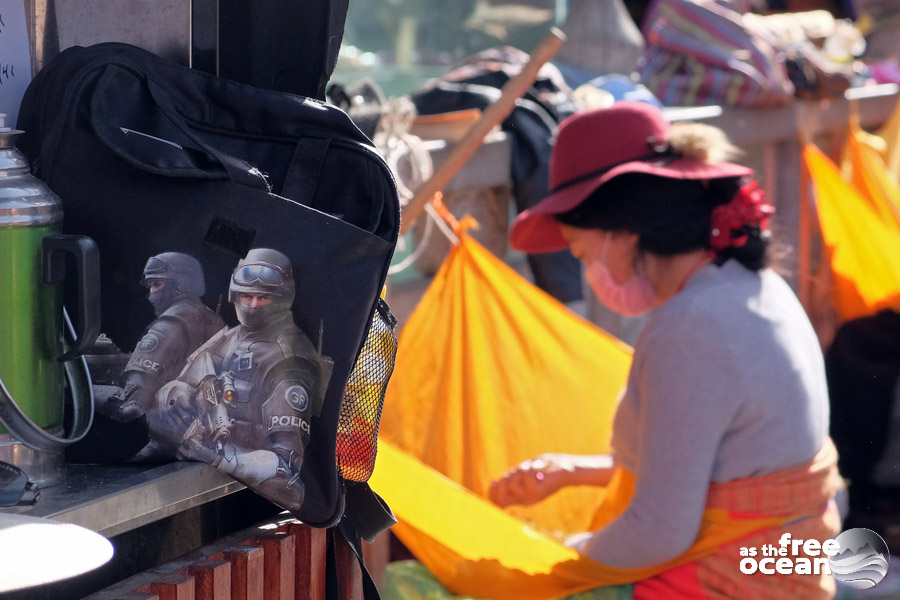
The Drepung and Sera monasteries
It was only the third day of our stay in Lhasa when our guide picked us up from the hotel. The first day is usually reserved for acclimatizing to the high altitude. It is also advised not to take any shower on the first day due to the risk of dehydration. Instead, plenty of water should be consumed, as well as fruits to supply the body with necessary vitamins. Another problem of being at high altitudes is the thin air that might make breathing harder, but oxygen supplies are usually available.
We were a group of 8 people sharing a minivan that brought us around Lhasa, guided by Jigme, our wonderful guide from Tibet Vista. The first stop of the trip was the Drepung Monastery, the largest in Tibet. Apart from a beautiful view over the entire city and a chance to explore the interiors, including their gigantic kitchen, the Monastery offers a deeper understating of religious practices and traditions. And there is no other better way to understand Tibetan Buddhism than by watching monks debating, which is what we did later in the courtyard of the Sera Monastery. The experience was unique and, luckily for us, visitors were allowed to witness it.
We’ve also seen the largest wall painting of Buddha and detailed sand mandalas and we visited a religious text printing house.
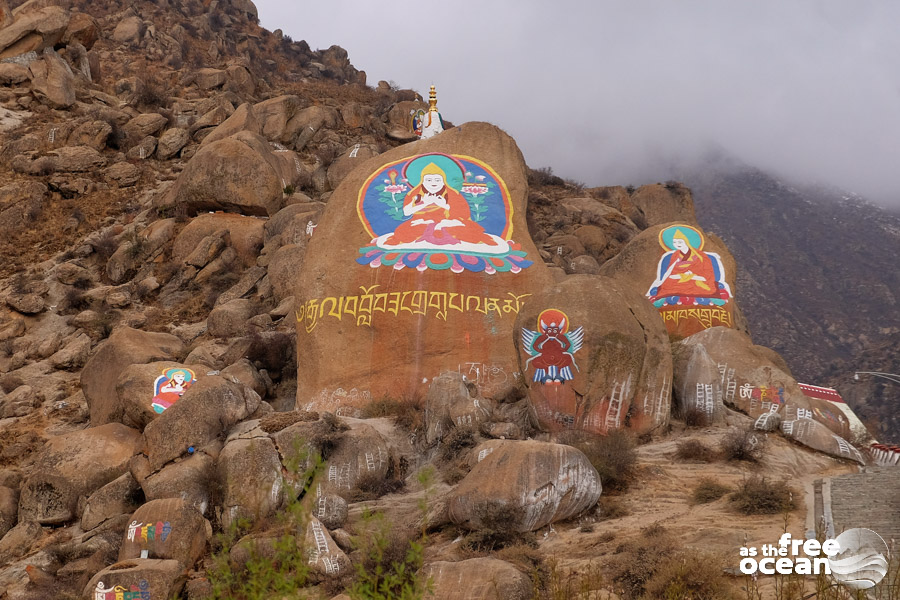
The day ended back at the hotel, where we all ate dinner together and had a chance to get to know each other better. The oldest member of our group was Margrit, an adventurous lady that, despite being in her 80s, still ventures out to explore the world.
The Potala Palace
The next day our guide led us on the streets of old Lhasa, to see pilgrims on the Barkhor Street and prayers spinning wheels on a circuit around the Jokhang temple. The afternoon was reserved for visiting the most important landmark in Tibet, the famous Potala Palace. Beautiful and impressive from the outside, the former home of the Dalai Lama hides ancient scripts and secrets, together with magnificent Stupas that are hosting the mummified bodies of some of the previous Dalai Lamas. The most famous is the one of the 13th Dalai Lama, containing more than 590 kilograms of gold and being embedded with 100,000 pearls and precious stones.
The palace has more than 1000 rooms, but only a few are open to tourists and pilgrims. Taking pictures is not allowed inside the palace or any of the monasteries. After a late lunch, we went to the park of “Tibet Peaceful Liberation Monument” (the name does not really describe the real historic facts), located in front of the Potala Palace, from where we could witness the sunset over its mysterious walls.
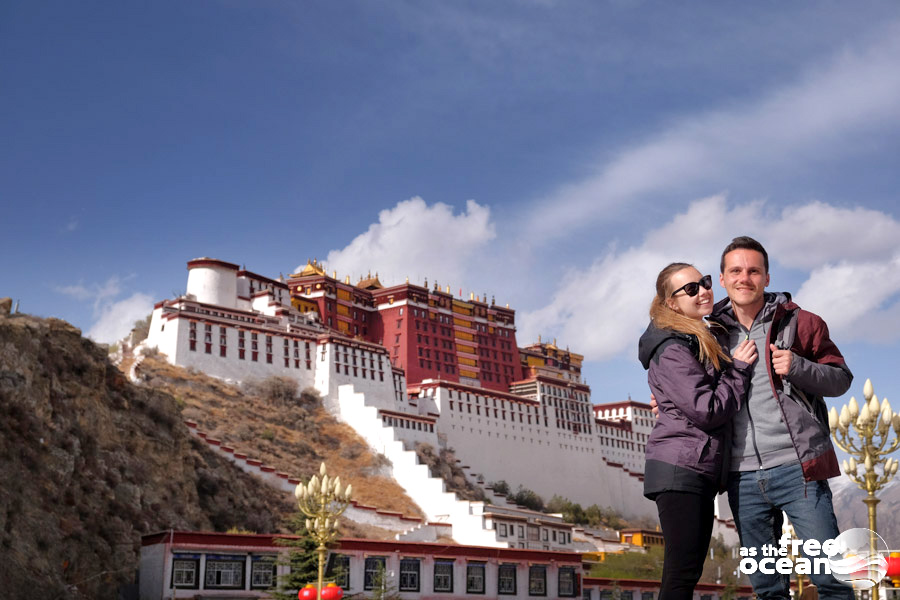
We walked back to the hotel for our last dinner, before getting ready to say goodbye to Lhasa. The following days would take us on top of the Himalayan Mountains, through the wildest and the most spectacular landscapes of the Tibetan Plateau. Read more about it here.

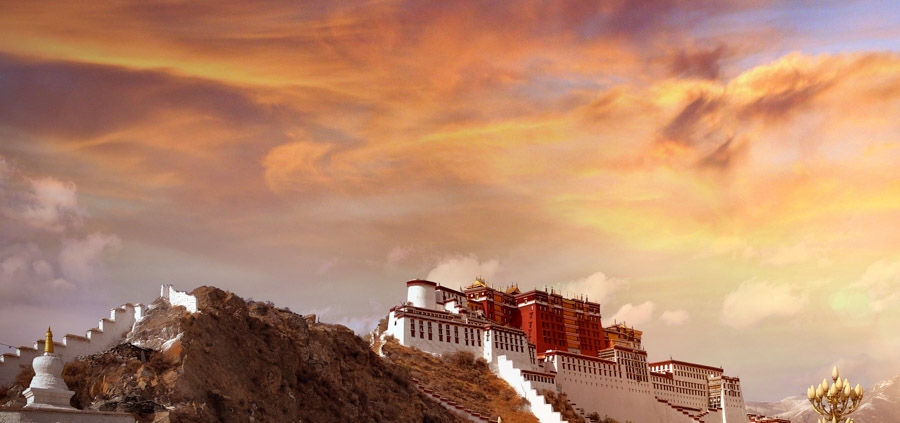
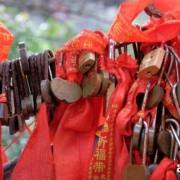
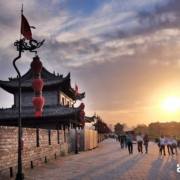
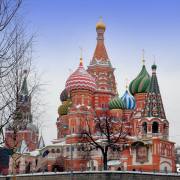
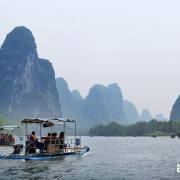
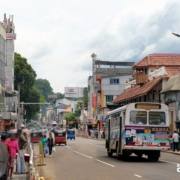
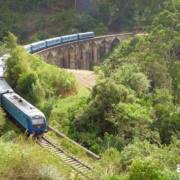


Leave a Reply
Want to join the discussion?Feel free to contribute!